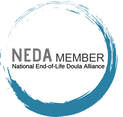|
On today's segment of "Know Your Funeral Options," I would like to discuss cremation, a rapidly growing choice in end-of-life arrangements. According to the Cremation Association of North America, in 2022, 59% of Americans opted for cremation. There are two primary types of cremation: Direct Cremation and Cremation Memorial.
Direct Cremation involves the cremation of an individual without a viewing. The person is picked up, cremated, and their ashes are then returned to the family. Subsequently, the family may or may not choose to hold a service or ceremony. On the other hand, Cremation Memorial follows the standard American funeral procedure, including dressing, viewing, placing in a coffin, and then cremation with the ashes returned to the family. Like any option, there are both advantages and disadvantages. Pros: The first advantage is cost. According to Lincoln Heritage Funeral Advantage, the average cost for Direct Cremation in the Detroit, MI area is $987, with a price range of $655-$2000. Cremation Memorial costs an average of $2,092, with a price range of $1,300-$2,500. This is significantly more affordable than Traditional Burial, which averages $4,700 in the Detroit area but can escalate to $9,000. For more information on Burial, refer to the earlier post in the series on Traditional Burial. Another pro is the environmental impact. While not as environmentally friendly as water cremation or human composting, cremation is still more eco-friendly than Traditional Burial. Traditional Burial is associated with groundwater pollution and requires substantial resources like concrete and wood for coffins, all of which are buried. Cremation uses fewer resources, and Direct Cremation can be done without the need for embalming, reducing the use of harmful chemicals. Cons: Despite the numerous pros of cremation, there are a few cons. The first is that cremation is not approved by all religions. Some religions, such as Jewish and Islamic faiths, prohibit cremation. As the rates of cremation rise, it is crucial to discuss this option with the family and ensure it aligns with their beliefs. Another con is the cost associated with handling the ashes. While cremation itself may be affordable, options like turning ashes into a coral reef or a diamond can be quite expensive, often costing tens of thousands of dollars. Traveling with ashes on airplanes requires paperwork, and international travel demands even more documentation, with the added risk of damage to the urn during security checks. In conclusion, cremation is a popular choice among many Americans, offering both advantages and disadvantages. It stands out as a more cost-effective and environmentally friendly option. However, cons include the expenses related to handling ashes and the necessary travel paperwork, along with the potential to offend certain religious beliefs. Despite these drawbacks, cremation remains a viable and practical option for many people.
0 Comments
Your comment will be posted after it is approved.
Leave a Reply. |
AuthorRobin Lehman Archives
April 2024
Categories |
 RSS Feed
RSS Feed


